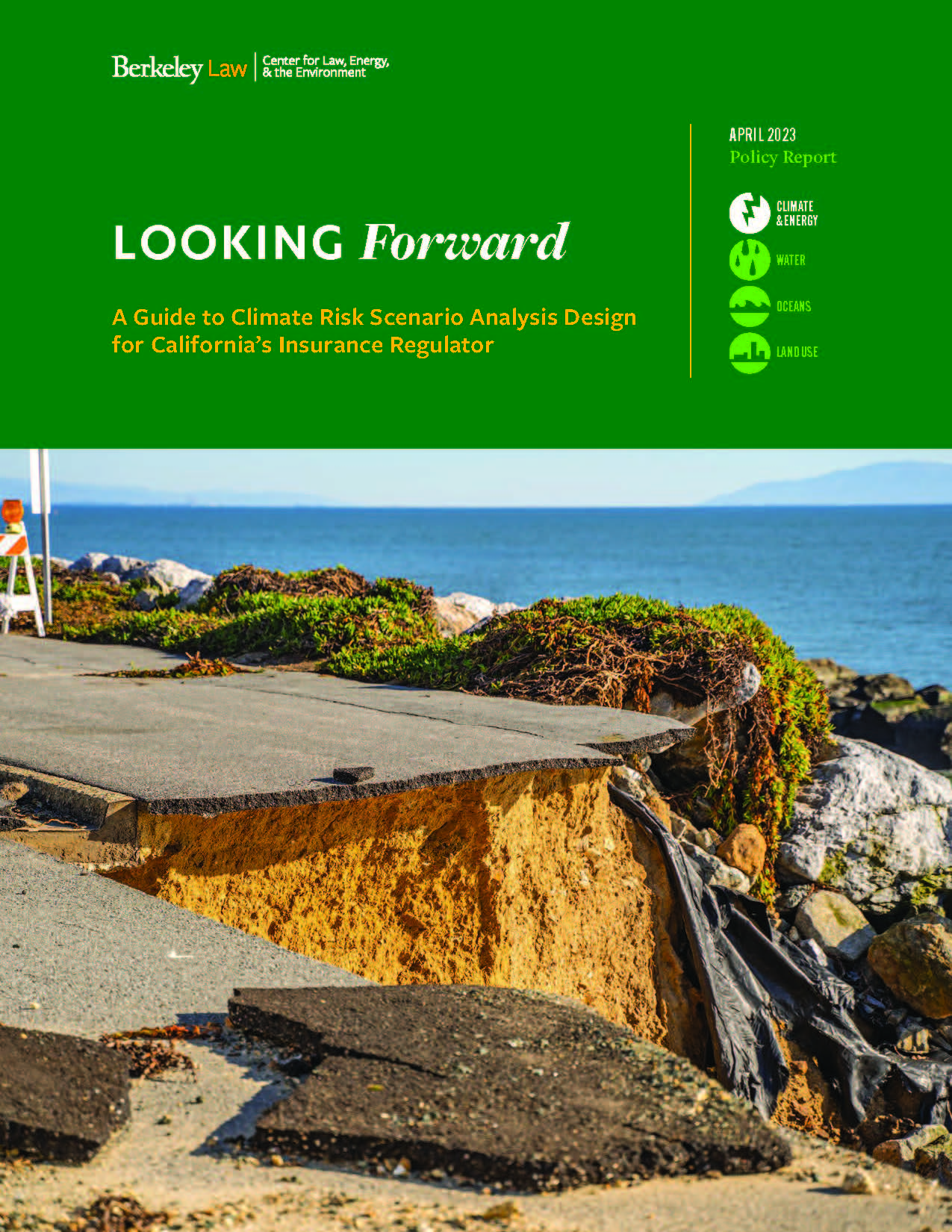In February, 2024, the California Department of Insurance (CDI) released the results of a climate risk stress test analyzing how California, Oregon, and Washington insurers are positioned for the transition to a low-carbon economy. The exercise builds on recommendations CLEE made to CDI last year in our report Looking Forward, which proposed a multi-year program of iterative scenario analysis and stress test exercises to develop a clear understanding of the financial risks facing the state’s insurance sector. The CLEE report and the CDI analysis both build on work spearheaded by CLEE’s Dave Jones during his two terms as Insurance Commissioner. You can access the CDI analysis and view a release webinar featuring CLEE’s Ted Lamm and California Insurance Commissioner Ricardo Lara here.
April 2023
California’s insurance industry faces significant risks from climate change, including both the transition risks facing all financial institutions as the global economy shifts toward decarbonization and the singular combination of physical risks—wildfire, drought, coastal hazards, extreme heat—that threaten California’s communities and businesses.
Accurately assessing and mitigating these risks will be vital to ensuring the long-term viability of the insurance market in California, the availability and affordability of insurance for California residents and businesses, and the state’s physical and financial resilience in a changing climate.
CLEE’s report Looking Forward explores the field of climate risk scenario analysis—a key instrument to assess financial risk in projected future scenarios—and makes recommendations for the California Department of Insurance to design scenario analysis exercises and engage California insurance companies in forward-looking risk assessment. The report analyzes precedent and decision-making criteria for structural elements such as “top-down” (regulator-led) versus “bottom-up” (insurer-led) exercises, scope of risks assessed, time horizons, strategic partnerships, and more. Key recommendations include:
- Early exercises should focus on departmental and insurer capacity- building, but the Department should quickly shift into analyses that inform policy decision-making (for both insurance supervision and broader climate risk management) once adequate capacity is built.
- A top-down approach may be most appropriate for initial efforts, but the Department should rapidly develop limited-scope, bottom-up pilot exercises.
- The Department should explicitly structure exercises to facilitate collaboration and information-sharing with peer supervisors, other California climate policymakers, and academic institutions.
- The Department should conduct exercises on an annual or biennial basis with new iterations tackling new risk types and scenarios in line with defined supervisory objectives and broader state climate policy goals.

